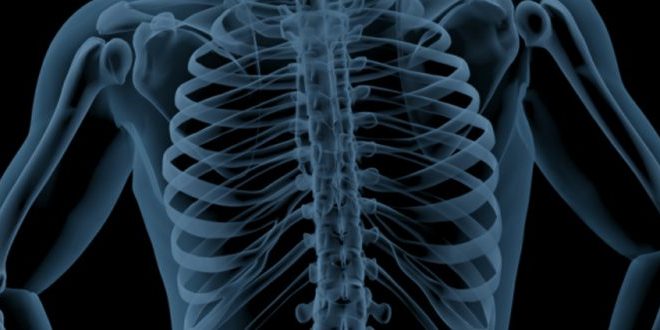ART for Repetitive Strain Injuries
Repetitive Strain Injuries (RSIs) develop over time from repeated motions or prolonged postures, leading to microtrauma, scar tissue, and adhesions in muscles, tendons, and fascia. Common in athletes, office workers, and manual laborers, RSIs cause pain, weakness, numbness, and restricted motion that worsen without proper intervention. Active Release Technique (ART) combines precise manual pressure with patient-guided movement to break up these adhesions, restore tissue glide, and improve blood flow. By addressing the root soft‑tissue dysfunction, ART not only relieves symptoms but also retrains the body for more efficient, pain‑free movement.

Repetitive Strain Injuries (RSIs) are one of the most common, yet least understood, causes of chronic pain. Unlike a traumatic injury that happens in an instant, RSIs creep in slowly — the result of repeated motions or static postures that, over time, wear down your body’s soft tissue systems. Whether you're an athlete perfecting your swing, a hairstylist using your hands all day, or someone working long hours behind a desk, the constant repetition can add up to serious dysfunction.
RSIs affect millions every year — from runners and tennis players to graphic designers and musicians. And the symptoms aren’t just annoying; they’re limiting. You might feel nagging pain, deep aching, burning, numbness, weakness, or a constant sense that something just “isn’t right” in your wrist, elbow, shoulder, or lower leg. These issues can keep you from doing your job, enjoying your hobbies, or even getting a good night’s sleep.
That’s where Active Release Technique (ART) comes in.
ART is a specialized, hands-on therapy that’s designed to break up adhesions — the scar tissue and restrictions that develop between muscles, fascia, tendons, and nerves due to overuse. By applying targeted pressure while guiding your body through movement, ART restores normal tissue mobility, improves circulation, and allows nerves and muscles to function the way they’re meant to.
What Are Repetitive Strain Injuries (RSIs)?
Repetitive Strain Injuries (RSIs) are soft tissue conditions that result from microtrauma — tiny, cumulative injuries caused by performing the same motion repeatedly or holding the same posture for too long. While each motion may seem harmless on its own, over time, the body’s tissues begin to break down under the constant strain.
Common Causes of RSIs
RSIs can stem from a variety of everyday activities. Some of the most common triggers include:
- Typing or using a computer mouse for hours without proper posture
- Lifting objects repeatedly at work or in the gym
- Throwing or swinging motions in sports like baseball, golf, or tennis
- Texting and scrolling on smartphones
- Scanning items or assembly line movements in manual labor jobs
- Playing instruments that require fine motor repetition
- Poor ergonomics at home, in the office, or during workouts
In each case, the soft tissues — muscles, tendons, ligaments, and fascia — become inflamed, stiff, and prone to adhesions, eventually leading to pain and loss of function.
Who’s at Risk?
The truth is, almost everyone is susceptible to RSIs. These injuries don’t discriminate. They affect:
- Office workers with static postures and high computer use
- Athletes who train frequently and repeat sport-specific movements
- Hairdressers, mechanics, and laborers who use tools or hands all day
- Musicians who practice for hours at a time
- Parents and caregivers constantly lifting and carrying children
- Even students and gamers hunched over screens or controllers for long periods
If your day involves repetitive movements or prolonged positions, your body is adapting — sometimes in ways that aren’t helpful.
Most Common Repetitive Strain Injuries
While RSIs can develop in almost any part of the body, some of the most frequently seen at Mountain Movement include:
- Carpal Tunnel Syndrome – compression of the median nerve in the wrist
- Tennis or Golfer’s Elbow – inflammation in the forearm tendons from overuse
- Rotator Cuff Tendinitis – pain and weakness in the shoulder from overhead motion
- De Quervain’s Tenosynovitis – thumb-side wrist pain from repetitive hand motion
- Plantar Fasciitis – stabbing heel pain, especially in the morning
- Shin Splints – pain along the front of the shin, common in runners
- IT Band Syndrome – pain on the outside of the knee, often in runners and cyclists
Each of these conditions shares a common thread: tissue overload over time. The good news? With the right intervention — especially one as targeted as Active Release Technique — healing is not only possible, but expected.
Signs You May Have a Repetitive Strain Injury (RSI)
Repetitive Strain Injuries often start subtly — a little tightness here, a bit of soreness there. But over time, that “minor” discomfort can snowball into persistent pain, weakness, or even nerve damage if left unaddressed. The key to recovery is catching the signs early and responding with the right care — like Active Release Technique (ART) — before things become chronic.
Gradual Onset of Pain During or After Activity
Unlike acute injuries, RSIs typically don’t come from a single moment of trauma. Instead, they creep in slowly. You might feel fine at the start of a task but begin to notice discomfort building during or afterward. Over time, that pain shows up earlier and lingers longer.
Tingling, Numbness, or Burning Sensations
These symptoms suggest that nerves may be involved — often from being compressed or irritated by tight, inflamed tissues. Carpal tunnel syndrome is a prime example, but similar patterns can show up in the neck, forearm, or even legs.
Weak Grip or Instability
A weak handshake, trouble holding a coffee cup, or feeling like your hand or limb might “give out” are all signs your soft tissues aren’t functioning correctly. It could mean that the nerves and muscles affected by repetitive stress are beginning to shut down.
Reduced Range of Motion
Can’t fully raise your arm? Difficulty turning your head? Struggling to bend or twist like you used to? These restrictions may be due to adhesions in the fascia and muscles limiting your joint’s normal glide — a hallmark of RSI.
Symptoms That Improve with Rest (But Keep Coming Back)
You take a few days off and feel better... only for the pain to return as soon as you’re back at your usual routine. That’s a strong sign the problem isn’t going away on its own — and that your body needs help rebalancing and healing properly.
Stiffness or Soreness in Muscles Used Repeatedly
That dull, nagging soreness that never quite goes away — especially in the muscles and joints you rely on the most — is a classic RSI signal. This ongoing tension is often caused by layers of soft tissue that are stuck, inflamed, or overworked.
How ART Works for Repetitive Strain
Repetitive Strain Injuries are often rooted in layers of soft tissue dysfunction — tight muscles, inflamed tendons, restricted fascia, and nerve irritation all working against efficient movement. That’s why the most effective treatment doesn’t just target the pain; it must address the entire chain of dysfunction. This is where Active Release Technique (ART) shines.
Precise Manual Therapy + Movement
ART is a hands-on, movement-based therapy that focuses on releasing the adhesions and scar tissue that develop from overuse and microtrauma. During treatment, your provider uses their hands to palpate and isolate the restricted tissue — whether it’s a muscle, tendon, ligament, nerve sheath, or fascia — and applies focused pressure while guiding you through specific movements.
This combination of manual tension and active motion helps to release stuck tissue, break down adhesions, and restore healthy sliding between muscle fibers and connective tissue.
Mechanisms of Relief
Here’s how ART creates results that go beyond symptom relief:
- Breaks up adhesions that limit motion and cause pain
- Restores full muscle length and glide, allowing you to move efficiently again
- Improves blood flow and oxygen delivery to promote faster healing
- Relieves nerve entrapment and improves signal communication
- Resolves compensatory patterns, helping prevent recurring injuries and imbalances
By unlocking restricted tissue and retraining movement, ART helps restore the body’s natural mechanics — so you don’t just feel better, you move better.
Why ART Is Different
Unlike generic massage or passive physical therapy, ART is:
- Highly specific and individualized — every session is tailored to your exact condition and tissue needs
- Interactive — you’re actively involved in the treatment through movement
- Comprehensive — it targets multiple soft tissue layers at once: muscles, fascia, nerves, tendons, and more
Small Movements, Big Problems — Real Solutions
Repetitive Strain Injuries are some of the most deceptive conditions we see — they often start as a dull ache or mild tension but gradually escalate into pain that interferes with your work, workouts, and everyday life. RSIs are sneaky. They creep in slowly, but once they set in, they can stop you cold.
What makes Active Release Technique (ART) such a powerful solution is its ability to go deeper than surface-level symptoms. Instead of chasing pain, ART targets the source — the tight tissues, adhesions, and faulty movement patterns causing the dysfunction in the first place.
At Mountain Movement Chiropractic & Natural Health, we combine ART with our full-body, fascia-informed approach to healing. We don’t just want to help you feel better for a few days — we want to help you move better, work stronger, and live pain-free for the long haul.
You don’t have to live with pain just because your job or sport demands repetition. There’s a better way — and we’re here to help you find it.
📍 Mountain Movement Chiropractic & Natural Health
📍 1901 Laurens Road Suite E, Greenville, SC 29607
📞 (864) 448-2073 🌐 mountainmovementcenter.com
🗓️ Office Hours:
Tues & Thurs: 9:00 AM – 5:30 PM
Wednesday: 8:30 AM – 4:30 PM
Friday: 9:00 AM – 5:00 PM
Closed Monday, Saturday & Sunday

We Treat the
Toughest Cases
We'd love to talk with you about yours. Ask us anything and we will get back to you with a detailed answer about your case.

.jpg)




